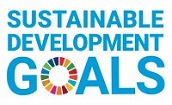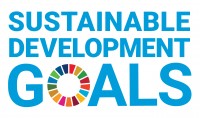Investment definitions
Understanding investment jargon is an important part of your savings and investment journey. Our Investment Definitions library is here to help explain some of the more complex concepts and terminology you may come across.
Click on the investment terms below for a detailed explanation.


Accumulation and Distribution Share Classes
Investment funds may offer a choice of accumulation and distribution classes, but what is the difference between the two?


Active versus Passive Investing
You may have heard the terms ‘active’ and 'passive’ in terms of investing but what do they mean?


Annualised Performance
Reviewing the annualised returns of an investment can help you evaluate how it has performed. How is this commonly represented and where is this information available?


Asset Allocation
What is asset allocation and how is it used in relation to an investment fund or when building your own portfolio?


Asset Classes
Assets with similar characteristics and behaviours can be grouped together into asset classes, but how does this help with creating a diversified portfolio?


Attitude to Risk
Before you start your investment journey it's important to understand if your attitude to risk is in line with your investment goals. What do you need to consider?


Benchmark
What is a benchmark and how can this be used as an effective measure when evaluating the performance of an investment?


Correlation
Spreading your investment across different funds or assets with different behaviours provides you with diversification. How can a correlation chart be used to help you identify these differences?


Cumulative Performance
Reviewing the cumulative returns of an investment can help you evaluate how it has performed. How is this commonly represented and where is this information available?


Currency Hedging
Currency hedging is a method that is used by fund managers to reduce exposure to fluctuations in currency exchange rates. How does this work?


Derivatives
Derivatives are financial instruments that can be used by fund managers to manage risk or generate returns within their investment funds. How do they work?


Discrete Performance
Reviewing the discrete returns of an investment can help you evaluate how it has performed. How is this commonly represented and where is this information available?


You may have heard of the concept of diversification to manage risk within your portfolio, but what does it actually mean and how do you create diversification?


Dividends
An investment may be income producing which means it pays a dividend. But what is a dividend?


Dollar Cost Averaging
Investors making regular payments into a savings plan will experience the concept of dollar cost averaging. What does this mean and what are the benefits?


Environmental - the 'E' in ESG
The assessment of how a company interacts with its environment is one of the three key factors in understanding ESG risks and opportunities. This is the ‘E’ in ESG.


ESG - Active Ownership
Exercising the rights of ownership to influence company decision making is one of the means with which investors can directly affect a company's adherence to ESG principles. This is an important part of investing responsibly.


ESG - Environmental, Social and Governance
Developed to meet the demands of the responsible investor, funds managed using Environmental, Social and Governance (ESG) criteria are a growing trend. What are these criteria and how are they used by fund managers?


Exchange Traded Funds (ETFs)
Exchange traded funds, commonly referred to as ETFs, are a type of investment fund. But how do they work?


Fund Charges
There are a number of charges that may be applied to investment funds. Before investing, make sure you know what to look for so you know how these will impact your investment performance.


Fund Factsheet
Most investment funds will produce a Fund Factsheet on a regular basis for investors. What information is contained in it and why should you read it?


Governance - the 'G' in ESG
The assessment of how a company is governed is one of the three key factors in understanding ESG risks and opportunities. This is the ‘G’ in ESG.


History and Emergence of Responsible Investing
Responsible investing has grown exponentially over the last decade, however investing in a responsible manner is not a new concept.


Holdings Overlap
Investing in funds where there is a cross-over in underlying stocks is called holdings overlap, but could this cause an issue in the diversification of a portfolio?


Investment Objective and Policy for a Fund
Before you invest in a fund it's important you read and understand its investment objective and policy to ensure that it is right for you. Where can you find this information?


Investment Styles – Value versus Growth
You may of heard of Value or Growth investing but what do these terms represent and how are they used to categorise how a fund invests?


Key Investor Information Document (KIID)
A KIID is an important document you should read before you decide to put your hard earned money into an investment fund. But what key information does it contain?


Morningstar Category
Morningstar is a large US based investment data provider that supplies data and tools within our online interactive fund centre. But what is a Morningstar Category?


Open-Ended versus Closed-Ended Investment Funds
Investment funds can be structured in different ways. Two of the most common are 'open-ended' and 'closed-ended'. What are the differences between the two?


Prospectus
To make sure you are fully aware of all the features of a fund and the risks involved before you commit to investing you should read its Prospectus. This is a very detailed document, but what does it contain?


Regional/Geographical Diversification
There are a number of ways an investor can apply diversification to their portfolio, including selecting funds in a certain region or geographic location.


Risk versus Reward
All investment carries risk, however a general principle in investing is that if you are prepared to take greater risk then you should receive greater reward. What tools can help you assess the risk of an investment?


Sector
You will often see investments or companies grouped by, or categorised within, a sector but what exactly is a sector and how is it useful for understanding your investment?


Social - the 'S' in ESG
The assessment of how a company interacts with the people around it is one of the three key factors in understanding ESG risks and opportunities. This is the ‘S’ in ESG.


Structured Products
Offering something slightly different to your traditional investment fund, structured products are a pre-packaged investment that provide exposure to derivatives plus a cash element, but how do they work?


Synthetic Risk and Reward Indicator (SRRI)
Using the Synthetic Risk and Reward Indicator (SRRI) that is found within the Key Investor Information Document (KIID) for a fund can give you guidance on the risk profile of a fund, but how does this risk scale work?


Total Return
A fund’s performance can be calculated in a number of ways, but if it’s calculated on a total return basis, what does this include?


The United Nations Sustainable Development Goals (SDGs)
At the heart of global development action plans for future peace and prosperity are the United Nations Sustainable Development Goals, which were set out in the 2030 Agenda for Sustainable Development and adopted by all UN member states in 2015.


Volatility
A common measure of risk in investments is volatility, which measures how often, and by how much, the price of an asset moves over time. How is this a useful measure and is volatility good or bad for your investment?



